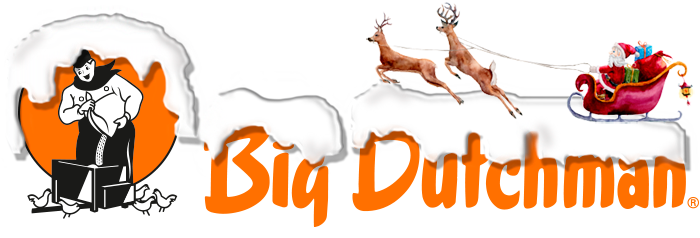Manure pit systems
for organic, barn and free-range egg production
A prerequisite for healthy hens with a high laying performance is good housing and equipment. It is essential that the individual components – nests, feed and water supply, perches and manure removal – link well together.
The modern manure pit systems from Big Dutchman are bird-friendly and can be fitted into the majority of houses. Whichever type of cage-free egg production you select, Big Dutchman has the right concept for you!
Colony 2+ group laying nest
well accepted by the hens, excellent egg quality
The correct laying nest plays an important role when looking for economic success. Reducing the number of misplaced, dirty and cracked eggs is crucial. Depending on the house layout, Big Dutchman offers its Colony 2+ nest with one or two tiers and as wall nest or double nest.
Main advantages
- short rolling-off distances for the eggs → smooth transfer to the egg belt to ensure excellent egg quality
- clever nest design with a roof that can be opened
→ easy nest inspection
→ easy cleaning
→ no hidden corners for mites - divided, tilting nest floor so that any eggs left in the nest automatically roll off towards the egg belt when the nest closes
- the tilting floor closes the nest after the laying period
→ daily build-up of dirt drops off the nest insert
→ the nest remains clean
→ low percentage of dirty eggs - nest depth of 53 cm
→ 153 hens per tier in wall nests
→ 305 hens per tier in double nests
Manure pit with plastic slats
To improve hygiene inside the house, part of the house should be used as a manure pit and equipped with slats. With both drinker and feed lines located above the manure pit, this is also the area where most of the droppings are deposited. The excrement is stored in the manure pit for the entire laying phase. After the batch, the manure pit is dismantled and the manure removed from the house. The Big Dutchman plastic slat is an ideal choice for laying hens.
Main advantages
- excellent hygiene due to the smooth surface;
- secure foothold for the hens;
- good manure penetration so the slats stay clean for the entire batch;
- no contact surface between the slats, i.e. no hotbeds for mites and other pests;
- lack of sharp edges or corners, reducing the risk of injury;
- flooring that is easy to install and to dismantle after the batch;
- high durability, long service life.
Metal slats
In addition to the plastic slat, Big Dutchman can also offer a metal slat. This slat is mainly used in fully-slatted houses that are equipped with manure removal systems, e.g. manure scrapers below the slats.
Metal slats are heavier than plastic slats but easy to clean while remaining in situ. Dismantling the manure pit is thus not necessarily required when using metal slats.
A-frame perches made of metal
Modern manure pit houses are equipped with A-frames to offer the required amount of perch space. These A-frames provide the birds with an elevated resting zone and thus more comfort.
The two Big Dutchman A-frame models, 3000 and 5800, are made of metal and the ideal choice both for manure pit houses and fully-slatted houses. Hens naturally like to perch in a high position at night. The A-frames are an elevated resting area that can also easily be combined with feed and drinker lines.
Feed supply
Feed is supplied by the tried and tested Big Dutchman chain feeding system.
Main advantages
- the Champion feed chain distributes feed rapidly and evenly throughout the entire house;
- the maintenance-free 90° corners ensure a trouble-free feed circuit;
- additional perching is available thanks to a tube above the trough that also prevents soiling of the feed below;
- the rugged plastic legs have a long service life, even when placed in the litter, and are also available with an inclination of 4° or 8°, depending on the manure pit;
- the combination of suspended and standing troughs makes it possible to winch the system up towards the ceiling for cleaning;
- the durable and solid construction has been proving its worth for many decades.
Water supply
Big Dutchman recommends nipple drinkers to provide the layers with clean drinking water. Nipple drinker lines can be suspended from the ceiling or stand on legs. Large or small drip cups beneath the nipples ensure that the manure remains dry.







